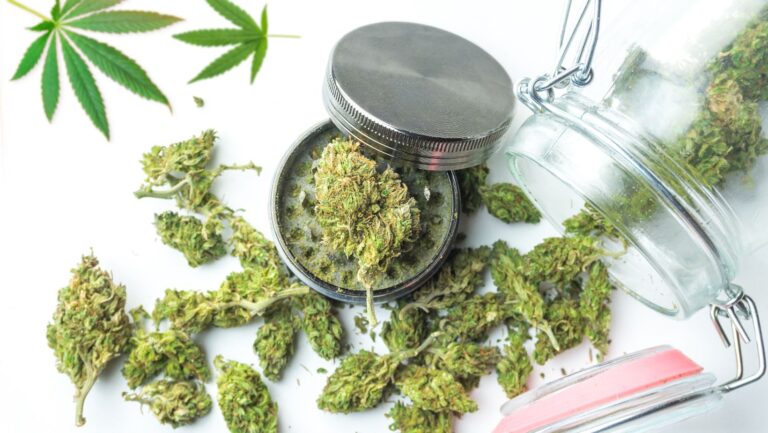As an expert in the field of marijuana cultivation, I have witnessed the growing interest and demand for information on this topic. With the legalization of marijuana in many states, individuals are now seeking guidance on how to successfully cultivate this plant. In this article, I will share my expertise and provide valuable insights on the best practices for marijuana cultivation.
Marijuana cultivation has become a popular endeavor for both recreational and medicinal purposes. However, it is important to note that growing marijuana requires knowledge, skill, and attention to detail. In this article, I will delve into the various factors that contribute to successful marijuana cultivation, including lighting, temperature, humidity, and nutrient requirements. By following these guidelines, growers can optimize their yields and produce high-quality marijuana.
Whether you are a seasoned grower or a beginner, this article will serve as a comprehensive guide to marijuana cultivation. From selecting the right strains to understanding the different stages of growth, I will cover all the essential aspects of cultivating marijuana. By the end of this article, you will have a solid foundation of knowledge to embark on your own successful marijuana cultivation journey. So let’s dive in and explore the fascinating world of marijuana cultivation together.
Understanding the Legalities of Marijuana Cultivation
When it comes to marijuana cultivation, it’s essential to understand the legalities surrounding this practice. Laws and regulations regarding marijuana cultivation vary from country to country and even within different states. Here are a few key points to consider:
- Legalization and Decriminalization: In recent years, there has been a significant shift in the legal landscape surrounding marijuana cultivation. Many countries and states have legalized or decriminalized the cultivation of marijuana for medical and/or recreational use. However, it’s crucial to research and understand the specific regulations in your area before engaging in any cultivation activities.
- Permits and Licenses: In jurisdictions where marijuana cultivation is legal, obtaining the necessary permits and licenses is often a requirement. These permits and licenses ensure compliance with local laws and regulations and help regulate the industry. It’s important to familiarize yourself with the application process and requirements to ensure you are operating within the legal framework.
- Restrictions on Quantity and Location: Even in areas where marijuana cultivation is legal, there may be restrictions on the quantity of plants you can grow and where you can cultivate them. These restrictions aim to prevent excessive production and regulate the distribution of marijuana. Understanding these limitations will help you stay within the legal boundaries.
- Seed Acquisition: The acquisition of marijuana seeds is another aspect that should be considered. While purchasing marijuana seeds may be legal in some areas, it is still illegal in others. It’s crucial to research and understand the laws regarding seed acquisition to ensure compliance.

The legal landscape surrounding marijuana cultivation is constantly evolving. It’s essential to stay updated on the latest laws and regulations to ensure you are operating within the legal boundaries. By understanding the legalities, you can cultivate marijuana responsibly and avoid any potential legal issues.
Choosing the Right Strain for Your Marijuana Cultivation
When it comes to marijuana cultivation, one of the most crucial decisions you’ll face is choosing the right strain. Each strain has its own unique characteristics, including growth patterns, potency levels, flavors, and medicinal properties. Here are a few factors to consider when selecting the perfect strain for your cultivation:
1. Purpose: Determine the purpose of your marijuana cultivation. Are you growing for recreational use or medicinal purposes? Different strains have different effects, so it’s important to choose one that aligns with your desired outcome.
2. Growing Conditions: Consider your growing conditions, including indoor or outdoor cultivation, available space, and climate. Some strains thrive in specific environments, so choose a strain that can adapt well to your growing conditions.
3. THC and CBD Levels: THC and CBD are the two main compounds found in marijuana. THC is responsible for the psychoactive effects, while CBD offers medicinal benefits. Depending on your preferences and needs, you can choose a strain with higher THC levels for a more potent high or a strain with higher CBD levels for therapeutic purposes.
4. Flavor and Aroma: Marijuana strains come in a variety of flavors and aromas, ranging from citrusy and fruity to earthy and pungent. Consider the taste and smell profiles that you find appealing, as it can enhance your overall experience.
5. Yield and Growth Time: Some strains produce higher yields, while others have a shorter growth time. Depending on your goals and patience, choose a strain that aligns with your desired yield and time frame.
6. Reputation and Reviews: Do some research and read reviews about different strains. Look for feedback on the strain’s growth characteristics, effects, and overall quality. This can give you valuable insights from other cultivators and help you make an informed decision.
Remember, marijuana cultivation is a personal journey, and finding the right strain is a crucial step towards success. Take your time, do your research, and choose a strain that aligns with your goals and preferences. Happy cultivating!
Proper Nutrients and Feeding Techniques for Marijuana Cultivation
When it comes to marijuana cultivation, providing the right nutrients and using proper feeding techniques is essential for healthy plant growth and optimal yields. Here are some key points to keep in mind:
1. Understanding Nutrient Requirements: Marijuana plants require a balanced mix of macronutrients (nitrogen, phosphorus, and potassium) and micronutrients (such as iron, manganese, and zinc) for healthy development. It’s important to choose the right nutrients and ensure they are available in the correct ratios throughout the different growth stages.
2. Selecting High-Quality Nutrients: There are various nutrient brands available in the market, but it’s important to choose high-quality options specifically formulated for marijuana cultivation. Look for nutrients that are designed for both vegetative and flowering stages to meet the plant’s changing needs.
3. Feeding Techniques: The frequency and amount of nutrient feeding depend on factors such as the growth stage, pot size, and genetics of the plant. It’s crucial to follow the nutrient manufacturer’s instructions and monitor the plants closely for any signs of nutrient deficiencies or excesses.
4. pH and EC Levels: Maintaining the proper pH and EC (electrical conductivity) levels in the nutrient solution is crucial for nutrient uptake and plant health. The ideal pH range for marijuana cultivation is between 5.8 and 6.5, while the recommended EC levels vary throughout the growth stages.
5. Organic vs. Synthetic Nutrients: Growers have the option to choose between organic and synthetic nutrients. Organic nutrients are derived from natural sources and can enhance soil health, while synthetic nutrients provide precise control over nutrient ratios. Both options have their pros and cons, so it’s important to consider the specific needs and preferences of your cultivation setup.

Remember, marijuana plants have different nutrient requirements at different stages of growth. By understanding these requirements and implementing proper feeding techniques, you can provide your plants with the essential nutrients they need for healthy growth and abundant yields.




